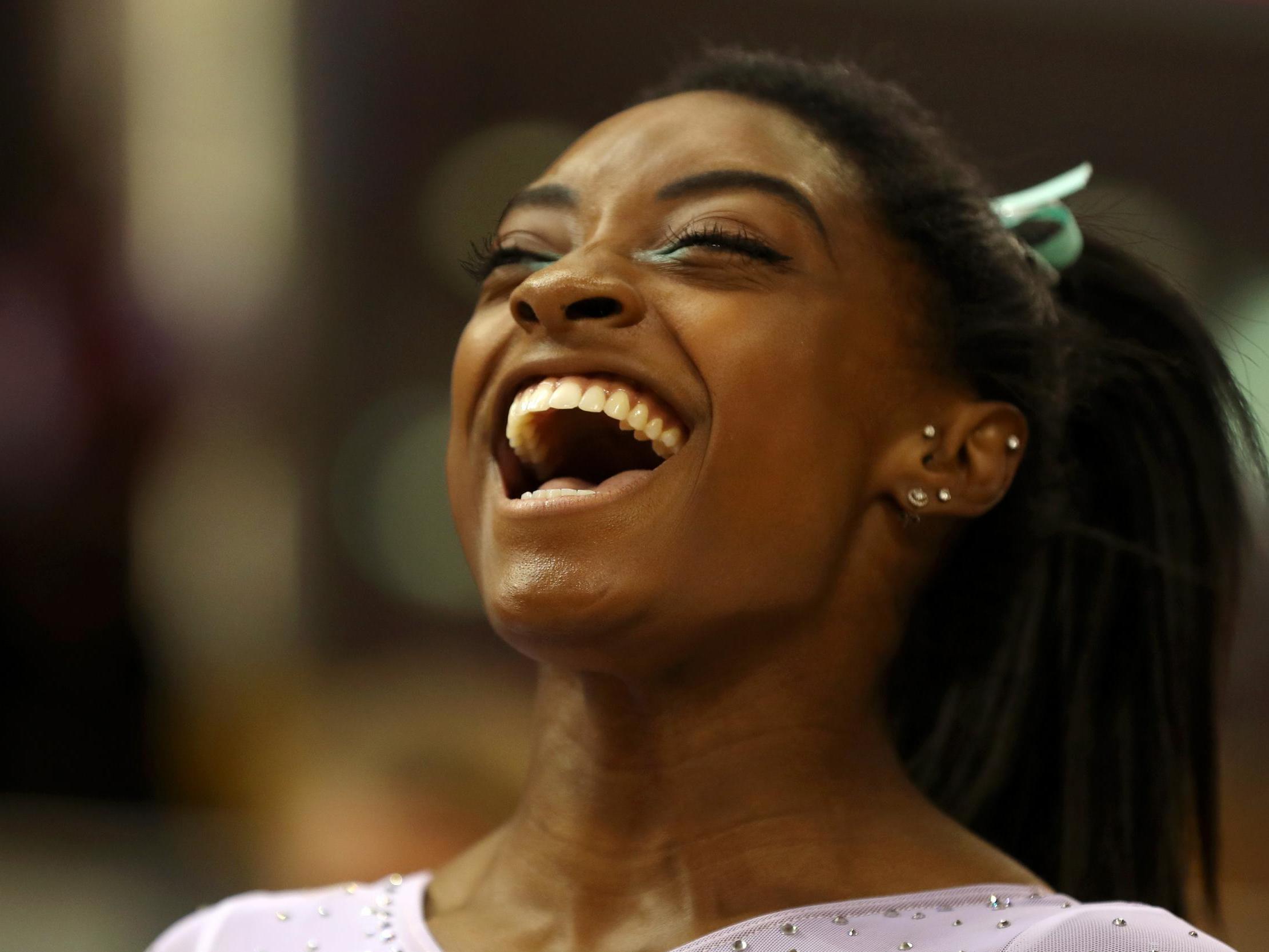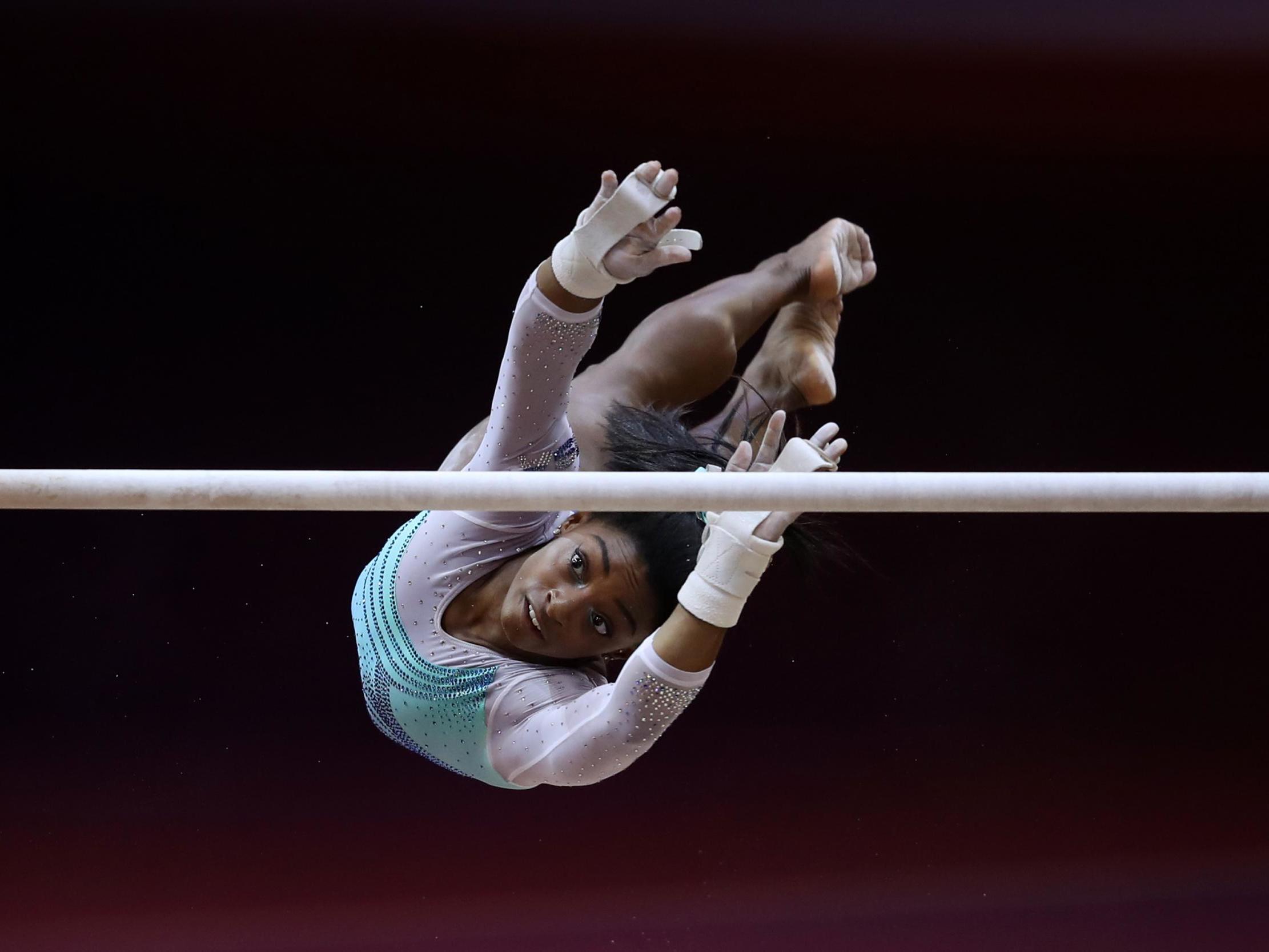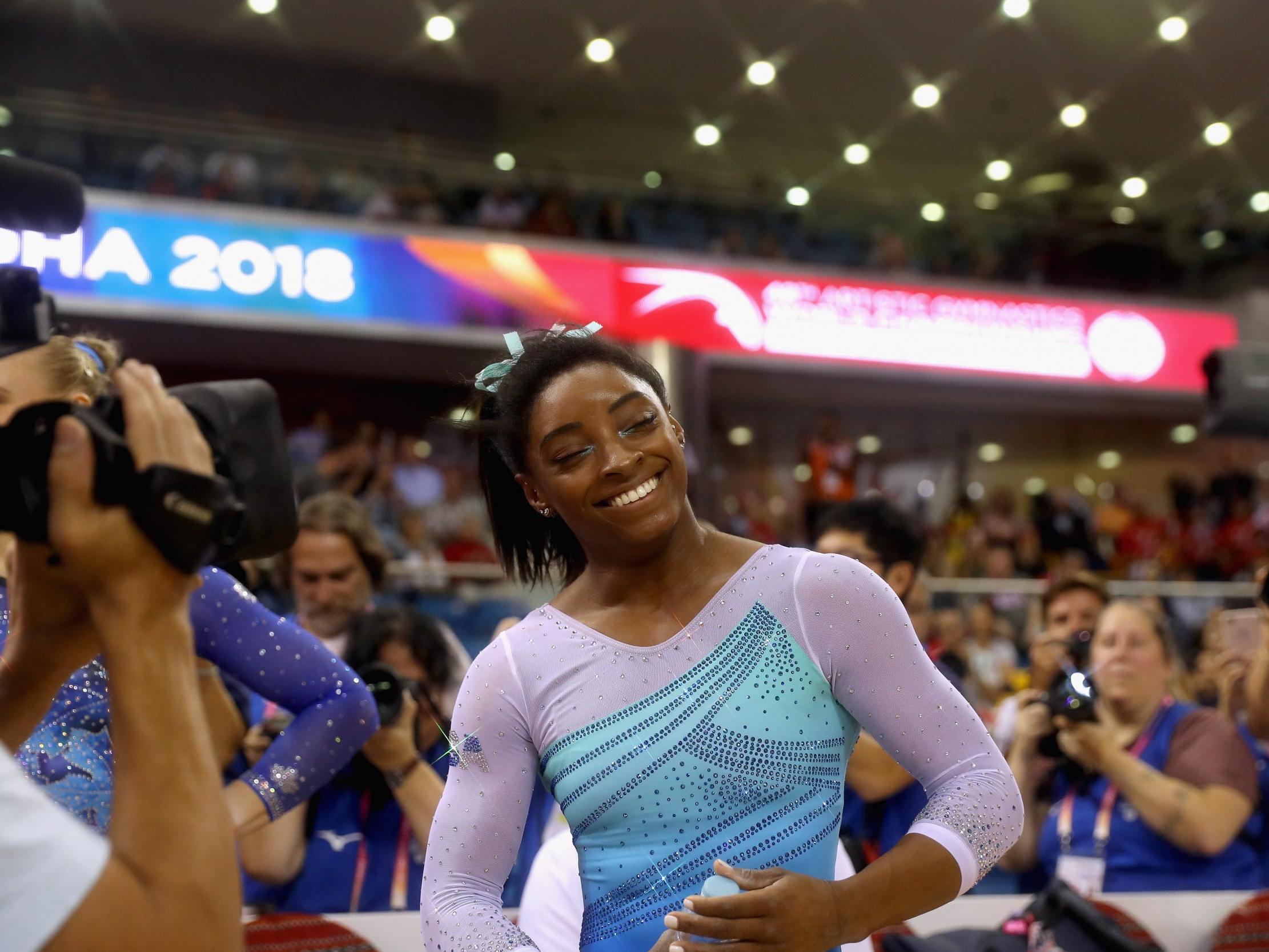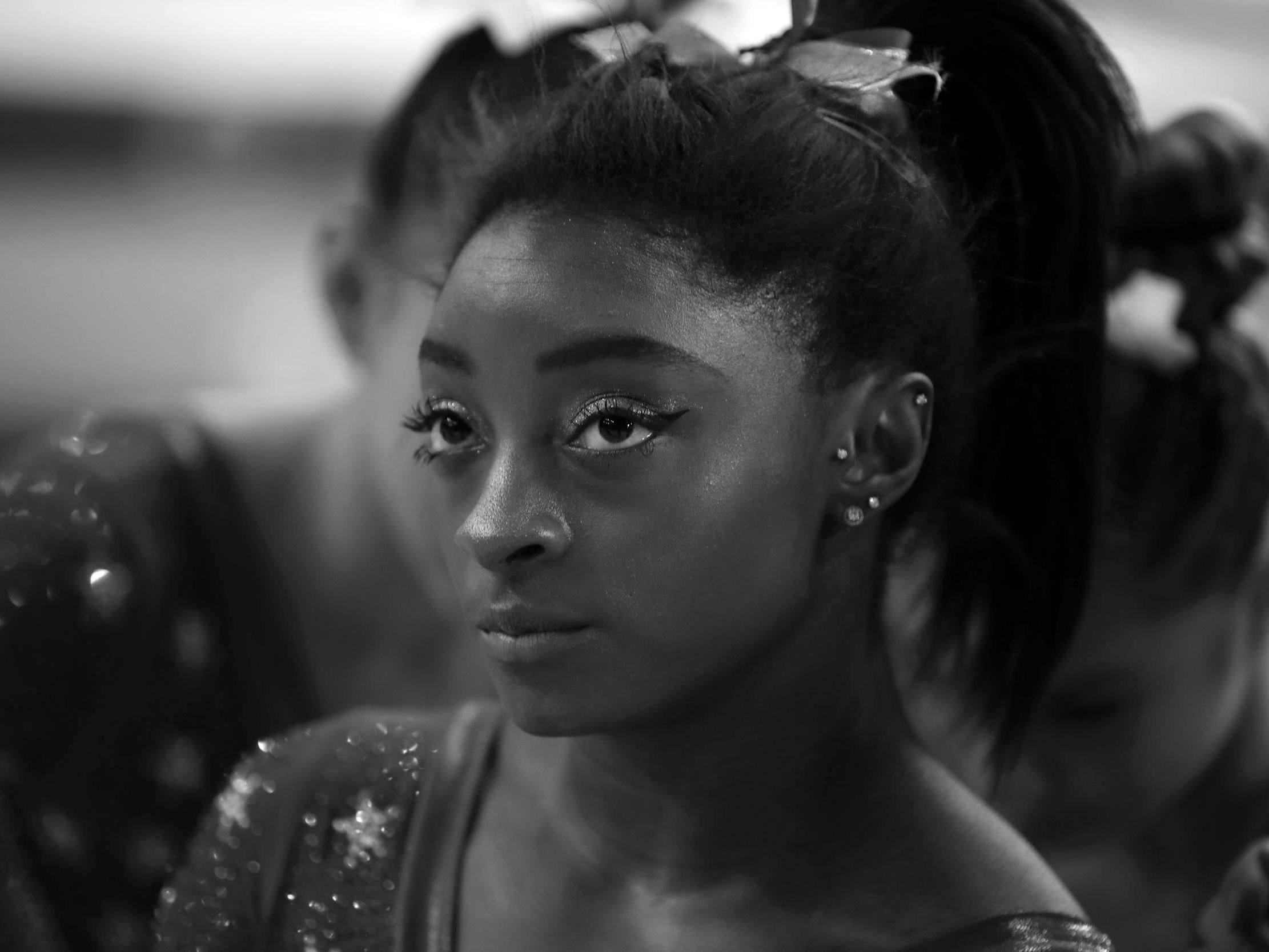A true artist of her sport, Simone Biles has shown that beauty lies in breaking boundaries
What Biles is accomplishing is not so much pure sport as pure art: something that stands outside the narrow confines of her event, that sets her on a plane very few athletes have ever inhabited, writes Jonathan Liew


Your support helps us to tell the story
From reproductive rights to climate change to Big Tech, The Independent is on the ground when the story is developing. Whether it's investigating the financials of Elon Musk's pro-Trump PAC or producing our latest documentary, 'The A Word', which shines a light on the American women fighting for reproductive rights, we know how important it is to parse out the facts from the messaging.
At such a critical moment in US history, we need reporters on the ground. Your donation allows us to keep sending journalists to speak to both sides of the story.
The Independent is trusted by Americans across the entire political spectrum. And unlike many other quality news outlets, we choose not to lock Americans out of our reporting and analysis with paywalls. We believe quality journalism should be available to everyone, paid for by those who can afford it.
Your support makes all the difference.The night before the start of the world championships in Doha, Simone Biles was in a hospital bed. She’d been suffering from agonising stomach pains for some days, and with no sign of abatement was forced to visit A&E, where doctors discovered a kidney stone. Surgery was out of the question, given that qualification for the women’s all-around began the following morning. An injection was out of the question, given anti-doping regulations. So Biles simply went back to her hotel and decided to compete through the pain.
On Thursday, she won her fourth world title in the all-around, the sport’s blue-riband event. She wasn’t anywhere near her best. She fell from the balance beam, fell on the landing to the vault, went out of bounds on her floor routine. Still, she won, and by a considerable distance: the gap of 1.7 points between Biles in first and Japan’s Mai Murakami in second was bigger than the gap between silver medal and 12th place. Or, put another way: Biles fell twice, could have fallen twice more, and still won gold.
To the gymnastics agnostic, there’s something weirdly compelling about this sort of dominance. On one level, we can have a conversation about difficulty tariffs, the uniqueness of her routines, the way Biles takes on vaults nobody else can, and so essentially begins every competition with an enormous head start. But behind all this, there’s a subtler and far more interesting process taking place, one in which Biles is not simply pushing at the boundaries of her own sport, but at the boundaries of sport itself: why we do it, what it means, what it’s for, possibly even what sport is supposed to be in the first place.
By way of illustration, watch Biles as she stands on the podium receiving her 12th world championship gold medal, a tally she may well have added to by the time you read this. She’s not happy. In fact, she looks livid, and only partly because of the kidney stone. And surely there’s a fundamental dissonance there, the sort that occurs when an athlete has so thoroughly outstripped the level of her fellow athletes that she has ceased, in any meaningful way, to judge herself against them. When you take the competition away, what remains?
Perhaps, in the end, only herself. Her breathtaking floor routine stands comparison with anything a man has ever produced. Her signature vault – ‘the Biles’ – has never been attempted in competition by any other woman. We’re moving into weird, uncharted territory here: where the conventional criteria of sporting success seem less relevant than the urge to invent, to create, to disrupt. As the former Olympic champion Nadia Comaneci puts it: “You have somebody who can do something we cannot even design on a paper.” What Biles is accomplishing is thus not so much pure sport as pure art: something that stands outside the narrow confines of her event, that sets her on a plane very few athletes have ever inhabited.
Who are the true artists of sport? I’m not just talking about people who looked nice, but who genuinely created something new through exemplar. Michael Jordan, perhaps. Lionel Messi, Dick Fosbury, maybe Tiger Woods. These are the change-makers: the athletes who transform their little corner of the world, and who thus in their own small way change the world itself. In one important respect, however, Biles has the capacity to surpass them all.
To understand how, you need to go back to 2006, and perhaps the most fundamental change in the history of gymnastics. That was the year in which the sport changed its Code of Points, removing the traditional maximum score of 10 and introducing an open-ended marking system, in which the only limit on a score was the athlete’s own imagination and physical capability. In a way, Biles was exactly the sort of gymnast envisioned by the new rules. In another, she may well be the one who tests them to destruction.

The long-term effect of the rule change was to turn gymnastics into a sort of physical arms (and legs) race, one that rewarded the most spectacular, tumble-laden routines, and thus placed a premium on explosive power, brute strength and acrobatic daring. For the first time, it was possible to fall and still win a gold medal, as long as you loaded your routine with enough difficulty: in other words, it was better to perform a super-difficult routine with a few errors, than to pull off a moderately-difficult routine perfectly.
In the wake of Biles’s most recent win, there has been a lively debate within the gymnastics community about this. Should you really be able to become world champion after messing up two of your four events? Should falls be penalised more severely? Is the goal of a world championship to discover the world’s best gymnast – which Biles clearly is, by any measure – or to reward the best gymnastic performance on the day?
There is, of course, a deeper subtext to this entire issue. At Biles’s first world championships in 2013, one of her Italian rivals Carlotta Ferlito joked that she and her team-mate would “paint our skin black, so then we could win too”. Ferlito quickly apologised for her comment, but afterwards a spokesman for the Italian Gymnastics Federation named David Ciaralli offered up a chilling and telling defence.

“Carlotta was talking about what she thinks is the current gymnastics trend,” Ciaralli said, as quoted in Dvora Meyers’s book ‘The End of the Perfect 10’. “The Code of Points is opening chances for coloured people (known to be more powerful) and penalising the typical Eastern European elegance, which when gymnastics was more artistic and less acrobatic, allowed Russia and Romania to dominate the field.”
This is a surprisingly prevalent view within gymnastics, although it’s not always expressed in such nakedly racist terms. In 2014 Bruno Grandi, the president of the International Gymnastics Federation argued that the current scoring system has resulted in “less pleasing gymnastics”, arguing that the sport was prioritising “too much of its acrobatic part and not too much artistry”. And in these words, and countless other media articles lamenting the death of “beauty” and “elegance” in modern gymnastics, we can identify a clear underlying prejudice: one that still adheres to Old World, white-centric ideals of elegance and beauty, artistry and body shape.
A false dichotomy is at work here: one that places “beauty” in opposition to “power”, “artistry” in opposition to “acrobatics”, the “elegant” in opposition to the “explosive”. The crowning achievement of Biles – and the likes of Gabby Douglas and Aly Raisman before her – is to prove you can be both at once. That elegance can come with rippling leg muscles. That the delicate can also be spectacular. That beauty is not necessarily a six-stone blonde Russian waif. That true artistry lies not in conforming to pre-existing ideals, but creating new ones, and in so doing, very possibly redefining the notion of beauty itself.

That’s the gymnastics part. Then, of course, there’s everything else: the advocacy, the triumph over adversity, the journey. Biles never knew her father, and was adopted by her grandparents due to her mother’s substance abuse. Earlier this year, she came forward to testify that she, like so many of her fellow gymnasts, had been sexually abused by the US team doctor Larry Nassar, whose crimes were systematically covered up for decades. She wears a teal leotard in solidarity with her fellow victims. She is – and this bears repeating more than once – still only 21.
What’s left? Well, there’s the Tokyo Olympics in two years, where she could add to the four golds she won in Rio and become the first woman to retain the all-around title for more than half a century. But you sense that in large part, the greatness of Biles can no longer be measured on a judge’s scorecard or a medal table or an expensive infographic, but in something less tangible.
What’s left? Only the still-untouched boundaries of her own athletic capacity. Only the terrifying thrill of watching her perform. Only the pure rush of throwing yourself nine feet into the air, feeling both weightless and timeless, and knowing as you reach your apex that no woman has ever done this before. Only the pure art of the true pioneer. Only the legacy of those who will follow in her tiny footsteps. Only the sheer inspiration and irrepressible endurance of the greatest gymnast who has ever walked the Earth.
Join our commenting forum
Join thought-provoking conversations, follow other Independent readers and see their replies
Comments